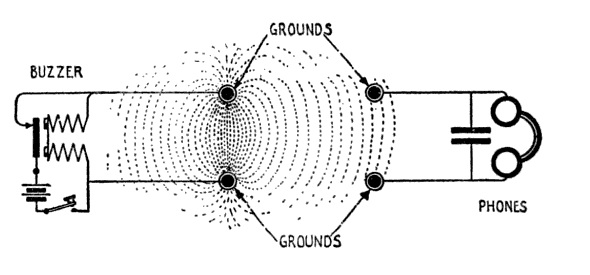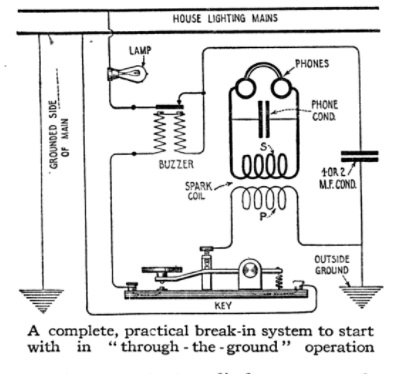 With civilian radio (both transmitting and receiving) shut down for the duration of the war, hams a hundred years ago still had a desire to engage in communications. As we’ve seen prevsiously (here, here, here and here), one method of communicating without the use of radio waves is a ground-conduction telegraph. And a hundred years ago this month, the January 1918 issue of Popular Science showed how to do it.
With civilian radio (both transmitting and receiving) shut down for the duration of the war, hams a hundred years ago still had a desire to engage in communications. As we’ve seen prevsiously (here, here, here and here), one method of communicating without the use of radio waves is a ground-conduction telegraph. And a hundred years ago this month, the January 1918 issue of Popular Science showed how to do it.
The magazine noted that “because the Government, for good and sufficient reasons, has put a ban on amateur wireless stations, it does not follow that all your activities must stop.” It noted that communicating by ground wireless was “almost as interesting” as actual radio and was “permitted by the Government, since high tension apparatus need not be used, at least not in their normal capacities.”
While the magazine noted that the Allies were apparently not using this type of communication, “for all we know the Germans may be using it now,” and that it had a potential range of forty miles, and perhaps more through salt water. (The 40 mile estimate seems extremely optimistic, but I can’t say I’ve ever tried it.)
 In addition to the basic circuit shown above, the magazine also showed this more advanced setup, which permitted full break-in operation (with the addition of a normally-closed contact to the key). It looks just slightly dangerous, and would probably trip a modern ground fault interrupter. It doesn’t appear to send any signal over the power lines, but does use the electric service ground as one of the two connections.
In addition to the basic circuit shown above, the magazine also showed this more advanced setup, which permitted full break-in operation (with the addition of a normally-closed contact to the key). It looks just slightly dangerous, and would probably trip a modern ground fault interrupter. It doesn’t appear to send any signal over the power lines, but does use the electric service ground as one of the two connections.
